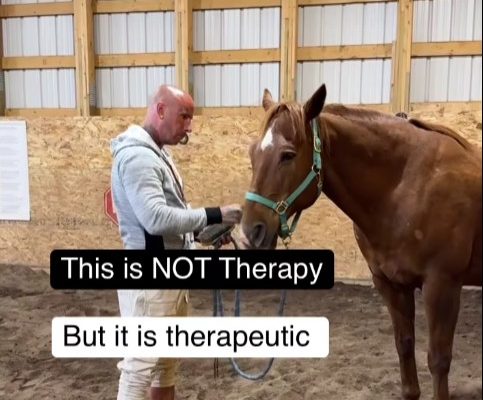Why Equine-Assisted Learning (EAL) is Therapeutic—But Not Therapy
There’s something undeniably powerful about working with horses. They help us grow, heal, and find clarity in ways that words alone can’t. But while Equine-Assisted Learning (EAL) is therapeutic, it is not therapy—and that distinction matters.
Unlike traditional therapy, EAL is not led by licensed therapists. Instead, it’s a guided experience where participants learn valuable life skills, build confidence, and develop emotional awareness—all through hands-on interactions with horses.
🐴 Horses as Teachers, Not Therapists
Horses don’t diagnose, and they don’t judge. They respond honestly to our body language, emotions, and energy, giving instant feedback that helps us understand ourselves better. Through structured activities, participants learn skills like communication, leadership, and problem-solving in a way that’s experiential—learning by doing, not by being told.
🔹 The Power of the Experience
While EAL can feel deeply healing, the goal isn’t to process past trauma or work through mental health challenges the way traditional therapy does. Instead, it’s about self-discovery, personal growth, and skill-building—whether that’s for leadership, teamwork, confidence, or emotional resilience.
✅ No Labels, Just Learning
EAL is for everyone—no diagnosis or therapy sessions required. It’s about creating real-world breakthroughs through the wisdom of horses, in a space that fosters learning, reflection, and personal transformation.
Horses don’t ask for explanations, and they don’t need one. They simply help us see the truth within ourselves—and that alone can be life-changing.



